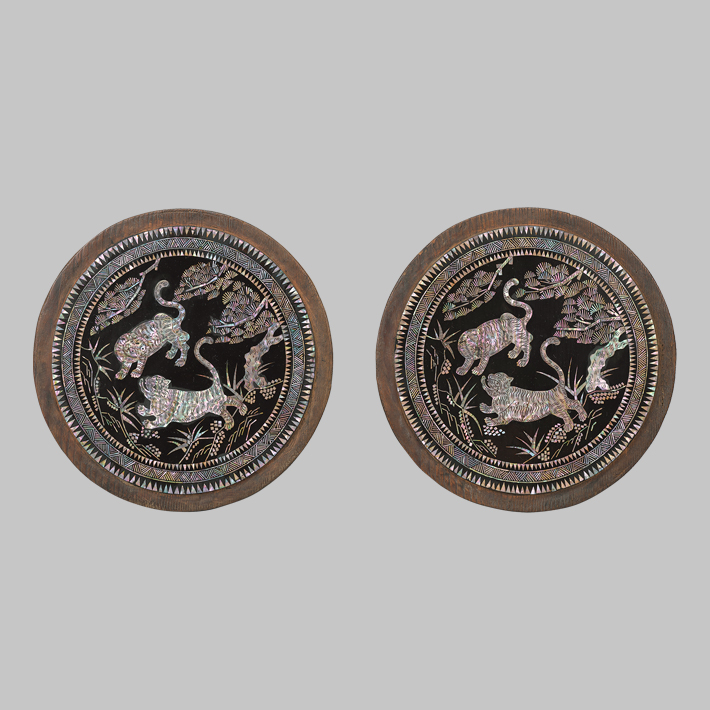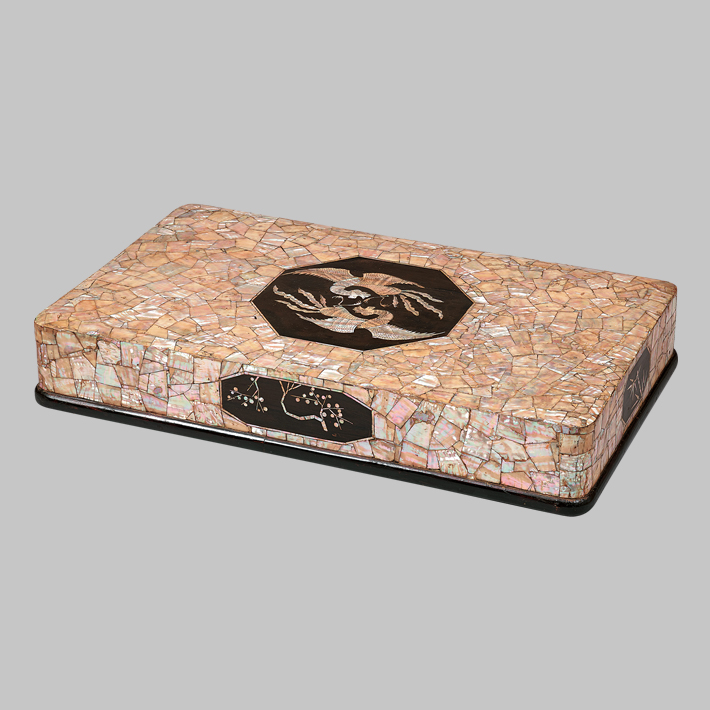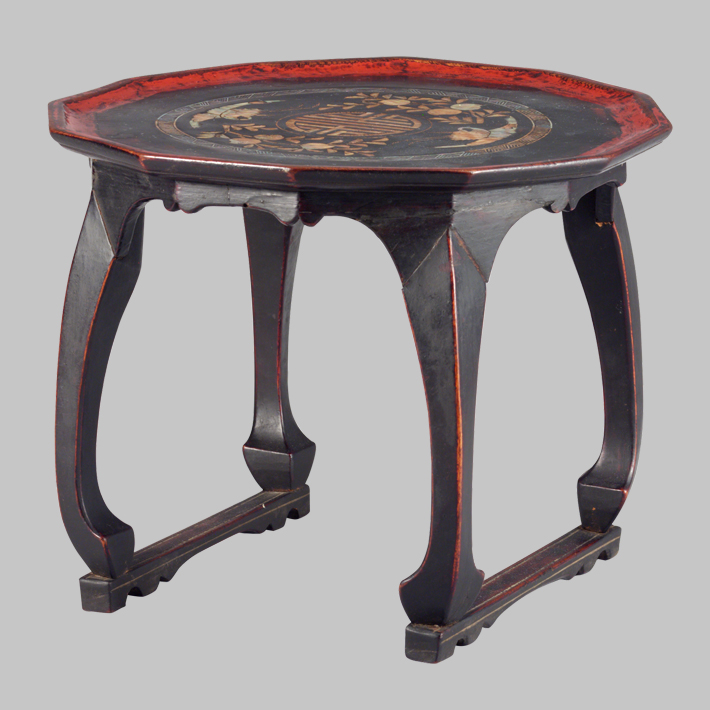Object
The Emergence of a Wider Range of Mother-of-pearl Lacquerware
In the 18th century, societal changes during the Joseon dynasty includes economic prosperity and blurring of social class systems. The tastes of the yangban upper class merged with newly emerging wealthy commoners. Mother-of-pearl lacquer decorations, previously limited in shapes to boxes, began to adorn chests, tables, glasses, and pillow ends. Designs also expanded to include nature motifs from the landscape painting style and distinctive folk patterns like the ten longevity symbols, two cranes with peaches, and the auspicious characters su 壽 and bok 福.





